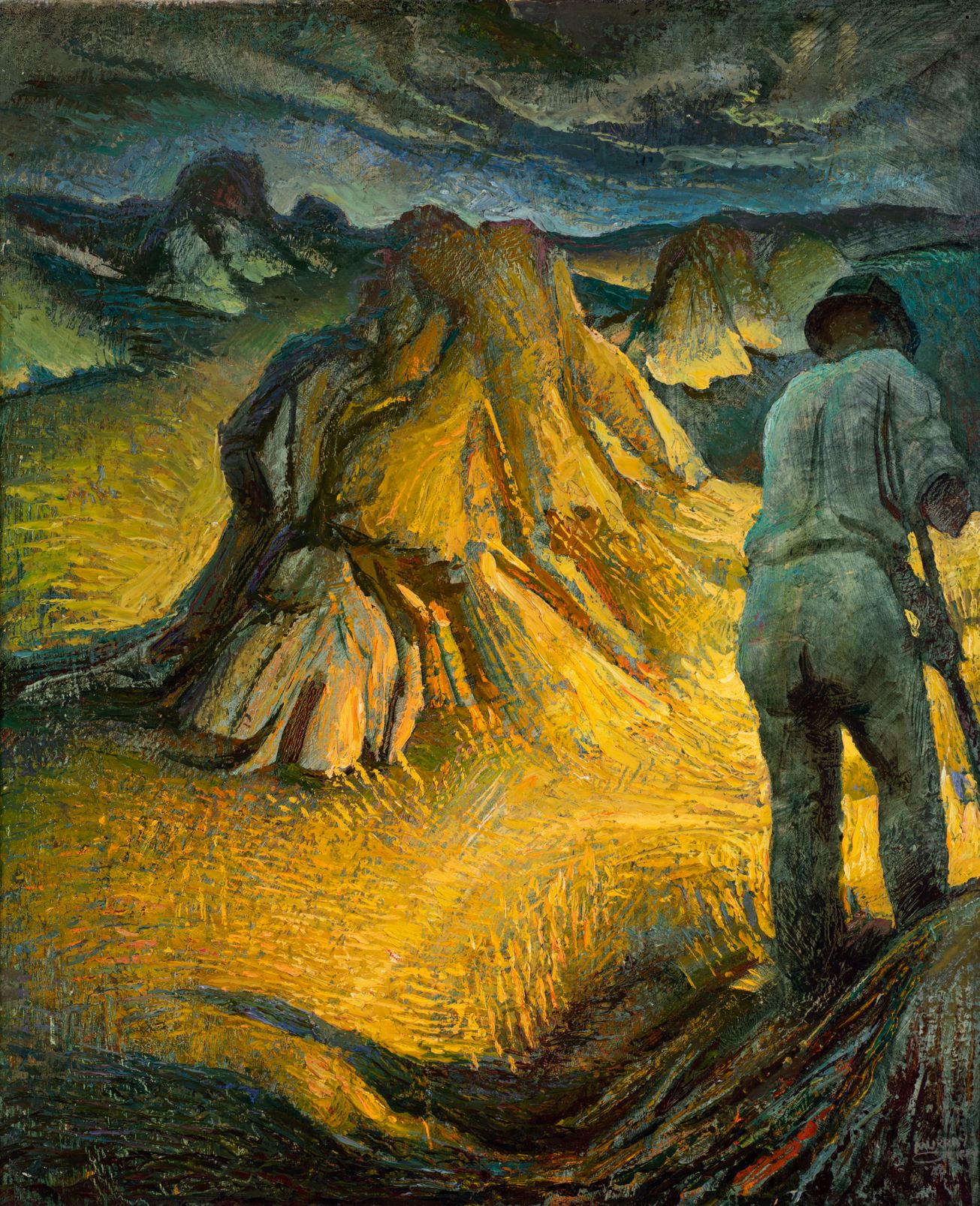McArdle on Griffin
Local artist and writer James McArdle is also an outspoken supporter of Castlemaine Art Museum beyond the gallery. As a Guide, welcoming and supporting visitors to make the most of their visit, McArdle brings a wealth of experience and knowledge which is clearly evident in this spirited Reflection.

James McArdle on Murray Griffin
“Hey, is that a Van Gogh?” I’ve heard more than one visitor whisper to their companion on seeing this painting. The colours yellow and blue are just like, and aren't the writhing quality and staccato brushwork similar?
Is this artist like Van Gogh, of whom John Berger said “When he painted the turned earth of a ploughed field, the gesture of the blade turning the earth was included in his own act.”? Certainly, this is a work by a man who has watched the sweep of the scythe and the stacking of sheaves bearing heavy heads of oats into stooks in Heidelberg where he painted with Henry Harrison. The latter, an art critic for the Argus and the Australian, has a name as unfamiliar now as that which we read on the label beside this intriguing work.
Indeed, this is a printmaker’s painting, with a sense of the gouge in the ploughed lines of paint, bold silhouettes, contrasts, and contours. Murray Griffin in the 1930s was celebrated for his virtuoso linocuts in both multi-block and reduction processes, most famously of birds, done in a Japanese style enviously admired by Arthur Streeton in a 1934 review. They and his landscape painting brought him commercial success and the George Crouch Award in 1935, until the financial stresses of the Depression forced him into teaching at Scotch College, then at the future RMIT.
A handsome, moustachioed young man, he was born of a well-to-do family living in a Heidelberg house designed by Walter Burley Griffin for the artist’s father, a civil servant. But World War Two, in which he was appointed an official war artist, brought him disaster; his paintings, packed ready for transport home were forever lost during the withdrawal from Singapore, then he was captured by the Japanese and incarcerated for three and a half years in Changi prison. There, he scrounged materials to secretly draw and paint “men sweating, men toiling, men cursing and men suffering” which, brought home after the War, were regarded as too confronting for publication, before they were exhibited at the NGV in October 1946 and in a national tour, and attracted praise for their awful beauty.
This 1948 painting is scorched by that experience. Its uncanny light is the last glare of sunlight from beneath roiling and glowering storm clouds that hasten the harvester’s efforts to protect the precious grain. But there is more than surface appearance. Griffin shared in his friendship with the 27-year-older American architect Burley Griffin a devotion to anthroposophy and the teachings of Rudolf Steiner who in a 1907 lecture pronounced that “When we go out in the autumn, and see a farmer mowing down the corn with the scythe, those who know […] can sense the feelings of well-being and of joy which pass through the astral body of the earth, while the corn is being cut. When the reaper cuts down the corn at harvest time, the whole earth rejoices…We can even feel the wind of wisdom, like a current of air.”
A companion painting from this series The Journey by Griffin, of a shearer, was originally titled, significantly, The Warrior. The human protagonist of Stooks and Storm might be Samael, one of the seven archangels — not ‘The Grim Reaper’ we have come to know — but whose Kali-like destructiveness is for Anthroposophists imagined to be a benign divine assignment in a global zeitgeist. Art historian Alisa Bunbury writes in 1998, that it was such vehement beliefs which Griffin called “a recognition of a deeper world, a spiritual world which I think people at heart believe in, but are a bit frightened of”, that brought the neglect he now unjustly suffers.